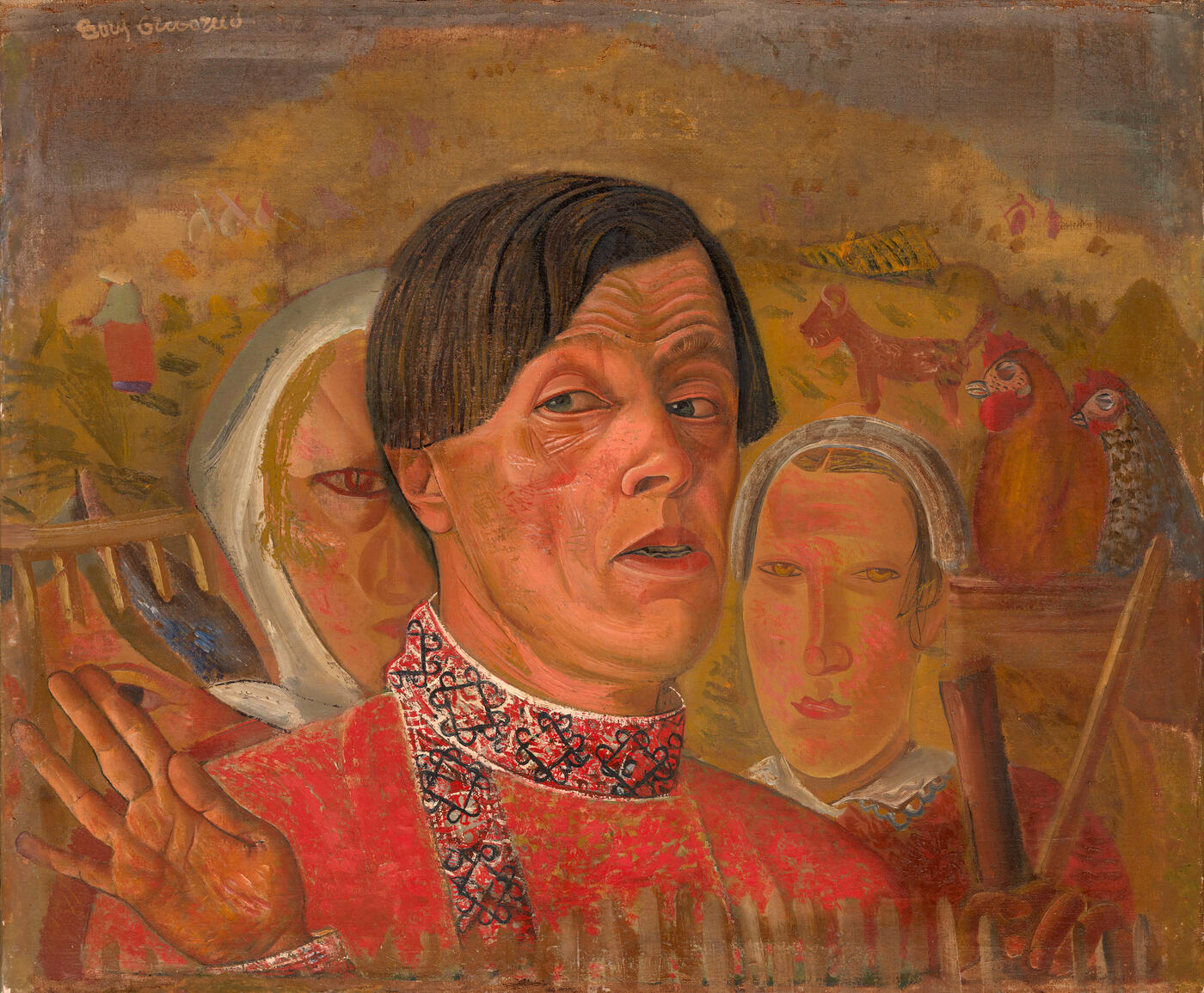27 Nov 2013 Russian Art Auctions
27 November 2013

* 41. GRIGORIEV, BORIS (1886-1939)
Self-Portrait With Hen and Rooster, signed.
Oil on canvas, 60.5 by 73 cm.
600,000–900,000 GBP
Executed in the 1920s.
Provenance: Private collection, Europe.
Authenticity of the work has been confirmed by the expert Yu. Rybakova.
Exhibited: Boris Grigor’ev, The State Russian Museum, St Petersburg, 21 April–29 August 2011, and The State Tretyakov Gallery, Moscow, 14 September–13 November 2011, No. 156.
Literature: T. Galeeva, Boris Dmitrievich Grigor’ev, St Petersburg, Zolotoi vek, 2007, No. 165, illustrated; p. 478, No. 165, listed.
Exhibition catalogue, Boris Grigor’ev, St Petersburg, Palace Editions, 2011, p. 166, No. 156, illustrated.
Boris Grigoriev’s Self-Portrait with Hen and Rooster is one of the artist’s key works from the second half of the 1920s. It is a unique summation of all the artist had accumulated and set down over the previous decade in his cycle of portraits entitled Visages de Russie.
The gallery of images Grigoriev created of the Russian intelligentsia abroad became a new facet of his favourite theme – Russia. Unsurprisingly, actors from the Moscow Arts Theatre whom he met socially when they were on tour in Paris in 1922–23 were among those who sat for him in the 1920s and early 1930s. The Visages de Russie cycle itself, which is among Grigoriev’s best work, embodied something about the look of the motherland that was, in the opinion of the art historian Gleb Pospelov, “if not more cheerful, then much more profound and diverse than in Raseya”.
In the 1920s Grigoriev achieved a celebrity like that of no other Russian émigré among art lovers in Europe and the USA. He was besieged by commissions, involved in almost every exhibition of Russian art, and his work was on continuous display at his one-man shows. In America he was known as ‘the great Grigoriev” and his faces of peasants in the Raseya series were taken as entirely faithful representations of rural Russia, and compared to the heroes of Bunin. He was called the bard of Russia and of the mysterious “Slavonic soul”.
It is as just such a homespun bard of Russia that the artist appears in this portrait: wearing a traditional tunic, surrounded by hens, roosters and dogs. Not without irony, he takes his creative credo, “to express the very essence of the Slavonic soul”, to its logical limit. This view of himself through Western eyes gives rise to a special self-consciousness and self-absorption, a special heightened self-analysis. The artist creates a grotesque portrait, in which individual features are generalised into a type that fuses all the portraits from the world of Russian art in the 1920s.
The style of the painting, aesthetically in the spirit of common folk dressing-up for holidays, is undoubtedly a reference to the portraiture traditions of 17th century Russia and primitivism, even displaying certain features of traditional icon-painting. These are to be seen not only in the composition and structure in terms of colour, which consists of flat areas of harmonious, intense, pure colours, but in the static quality of the figure of the artist and even in the highlights and touches to the face furrowed in wrinkles. This painterly device is so effective that the whole canvas is bestowed with his well-known foppishness, which to many seemed cold – but for the attractiveness of his heightened sensibility. The theatrical portrayal of his character was evidence of an entirely new seriousness of intent. Grigoriev remains true, as before, to the theme of artistry, but now this theme – characteristic of all his creative work – is impossible to conceive without becoming immersed in “elemental Russia”.
Notes on symbols:
* Indicates 5% Import Duty Charge applies.
Ω Indicates 20% Import Duty Charge applies.
§ Indicates Artist's Resale Right applies.
† Indicates Standard VAT scheme applies, and the rate of 20% VAT will be charged on both hammer price and premium.